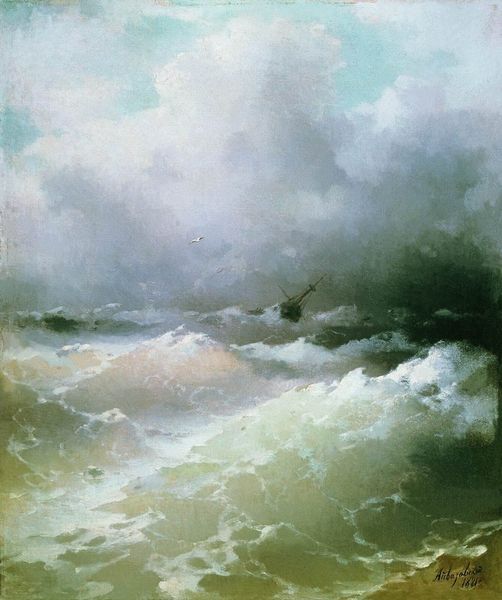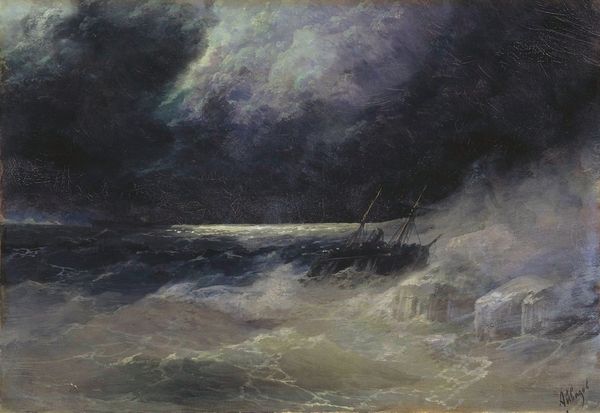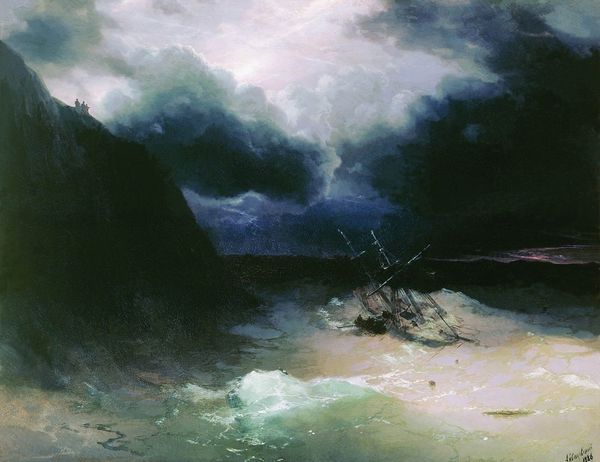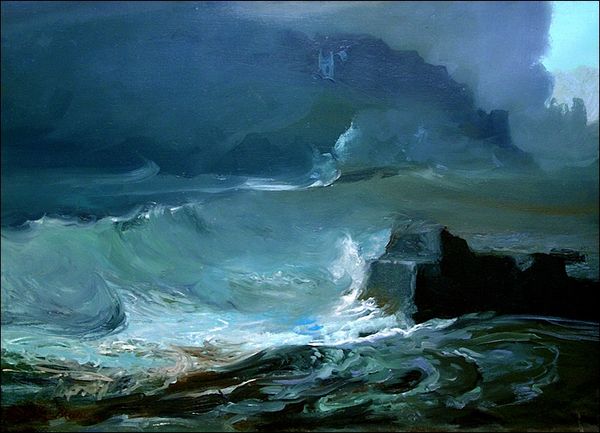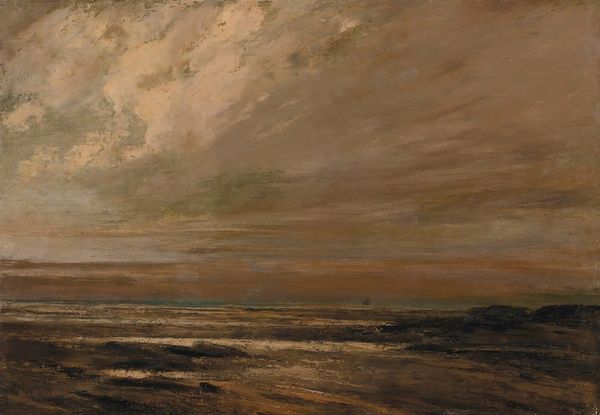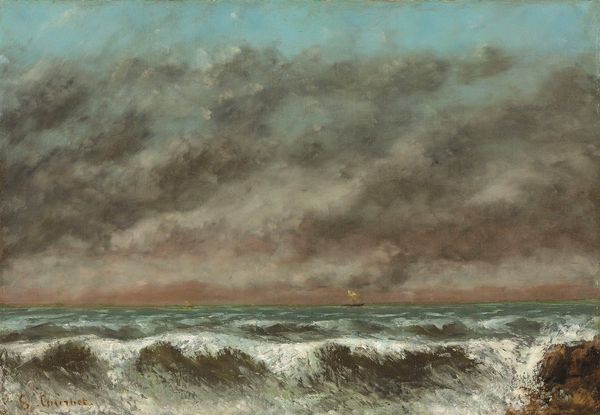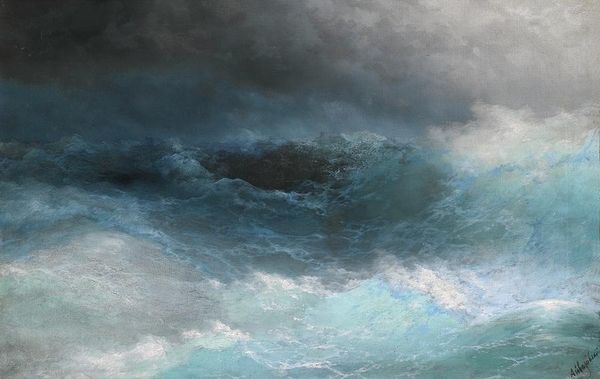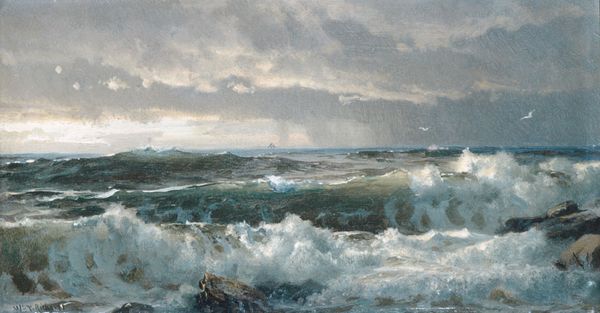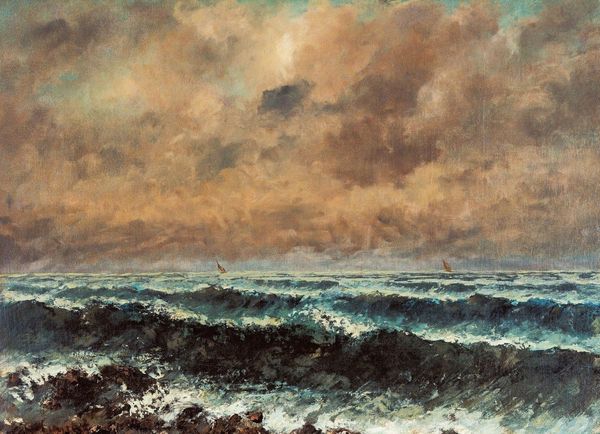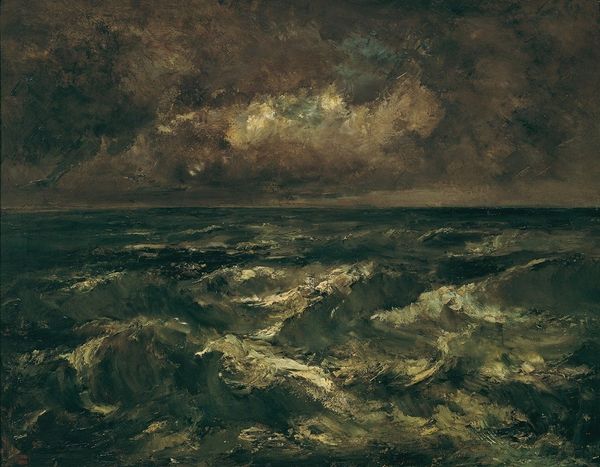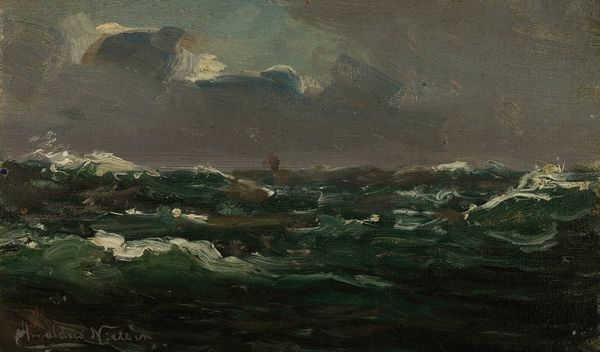
Copyright: Public domain
Editor: So, here we have Ivan Aivazovsky's "Sea" from 1895, rendered in oil on canvas. It's immediately striking, a seascape dominated by a stormy sky and turbulent water. The light feels almost theatrical. What story do you see unfolding here? Curator: I see a potent example of Romanticism's fascination with the sublime. Consider the context: Aivazovsky, a celebrated artist in Tsarist Russia, creates this dramatic scene. Think about the navy’s importance to Russia’s imperial ambitions. Do you see a glorification of nature’s power, or a commentary on human vulnerability against it? Editor: I lean towards vulnerability. The small shipwreck almost disappears amidst the waves, making me feel the vastness and indifference of the sea. Curator: Exactly. And how might this painting be received by different audiences? A wealthy St. Petersburg patron may admire its aesthetic qualities, perhaps as a status symbol reflecting power, while a sailor’s family may view it with trepidation. Do you see the duality in its public role? Editor: I do. It’s fascinating how the same image can hold such contrasting meanings depending on who’s looking at it. The institution of the art world shapes its reception. Curator: Precisely! The gallery itself, with its implied values of artistry, prestige, or even national pride, impacts the viewer's experience. Editor: This has given me so much to consider, how the historical and cultural landscape imbues a painting like this with far more than just what's on the surface. Curator: Indeed, recognizing the interplay between art, society, and its institutions offers deeper insight into art’s enduring power.
Comments
No comments
Be the first to comment and join the conversation on the ultimate creative platform.
